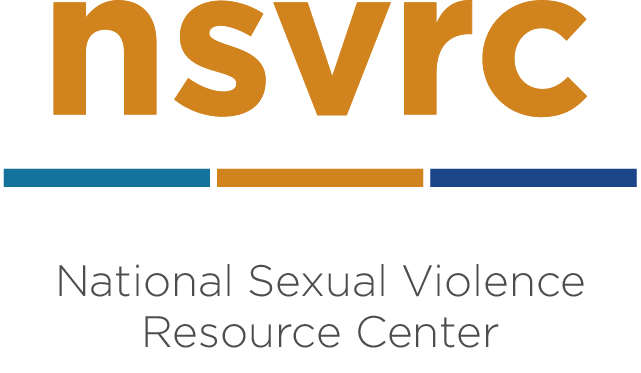https://www.nsvrc.org/es/blogs/una-imagen-del-traficante
Ago 23, 2021
Mientras el número de víctimas de tráfico aumentó en 2020, también lo hizo el de traficantes. Personas que trafican normalmente trabajan como propietarios o responsables de burdeles o falsos negocios de masajes, empleadores de servicios domésticos como niñeras o sirvientas, miembros de pandillas o redes criminales, reclutadores de mano de obra agrícola, propietarios de fábricas, proxenetas, propietarios de pequeños negocios, mano de obra, asociados de cuidado adoptivo o trabajadores sexuales. Mientras pueden trabajar también en el sector informal, traficantes humanos pueden ser también
https://www.nsvrc.org/es/blogs/seguimiento-de-las-tendencias-de-trafico-en-america
Ago 23, 2021
La pandemia de la COVID-19 ha mostrado de forma más clara las tendencias y patrones del tráfico, que han sido establecidas desde 1950, así como las nuevas formas de tráfico de personas con el internet. El seguimiento, así como otros crímenes en la sombra, es difícil de entender en su totalidad.
Desde la pandemia, la exigencia para las víctimas ha aumentado para poder cumplir con esta demanda creciente e incremento de vulnerabilidad. A pesar de que California tiene el número más alto de personas víctimas de tráfico por año debido a su población (seguido por Texas y Florida), Nevada tiene el
https://www.nsvrc.org/blogs/changing-signs-trafficking-1
Ago 23, 2021
Lea esto en español
The United States government lists the following ten signs as potential visual cues to detect a victim of trafficking:
Living with employer
Poor living conditions
Multiple people in cramped space
Inability to speak to an individual alone
Answers appear to be scripted and rehearsed
Employer is holding identity documents
Signs of physical abuse
Submissive or fearful
Unpaid or paid very little
Under 18 and in prostitution
We are now left to wonder how to create new detection methods, given the social shifts
https://www.nsvrc.org/blogs/snapshot-traffickers
Ago 23, 2021
Lea esto en español
Just as the number of trafficking victims increased in 2020, so did the number of traffickers. People who traffic usually work as brothel and fake massage business owners or managers, employers of domestic servants like nannies or maids, members of gangs or criminal networks, agricultural labor recruiters or farm growers, factory owners, pimps, small business owners or managers, labor brokers, foster care affiliates, or sex workers. While they may also work in the informal sector, human traffickers can also be the romantic partner or family member of the victim.
https://www.nsvrc.org/blogs/snapshot-victims
Ago 23, 2021
Lea esto en español
Trafficking victims come from many different types of backgrounds — they are diverse and often go unnoticed. Survivors of trafficking are part of your community — they might be the person who services our vehicle at a local auto repair shop, the teenager working at their families restaurant, or a close friend or family member who never shared their story.
Across the board, we don’t have much information about the victims of human trafficking. It is an industry shrouded in shame, fear, and secrecy. What we do know is that most trafficking victims identify
https://www.nsvrc.org/blogs/changing-signs-trafficking-0
Ago 23, 2021
Lea esto en español
The COVID-19 pandemic has shown more clearly the established trends and patterns of trafficking, which have been in place since 1950, along with new ways to traffic people via the internet. Trafficking, like other underground crimes, are difficult to understand fully.
Since the pandemic, the demand for victims has ramped up to meet growing demand and increased vulnerability. Although California has the highest number of persons trafficked per year due to its population (followed by Texas and Florida), Nevada has the highest trafficking per capita. Urban cities
https://www.nsvrc.org/es/blogs/covid-19-y-la-evolucion-del-trafico-de-seres-humanos
Ago 23, 2021
La Oficina de las Naciones Unidas contra la Droga y el Delito (UNODC) publicó un informe de alerta roja explicando el empeoramiento de las tendencias del tráfico y explotación sexual durante la pandemia de la COVID-19. Investigaciones recientes indican que la COVID-19 ha incrementado la tasa de incidencia de tráfico sexual por un 40%, no sólo globalmente sino también en EEUU. El tráfico de seres humanos es una de las industrias financieramente más lucrativas de crimen ilegal en el mundo. Los traficantes no sólo se han beneficiado de la desesperación financiera que la pandemia ha causado, sino
https://www.nsvrc.org/blogs/COVID-19-and-the-Evolution-of-Human-Trafficking
Ago 23, 2021
Lea esto en español
The United Nations Office on Drugs and Crime (UNODC) recently released a red alert report explaining a worsening sex-trafficking and exploitation trend during the COVID-19 pandemic. Recent research has indicated that COVID-19 has increased the incident rate of sex trafficking by 40%, not just in globally but in the USA as well. As the trafficking of human beings is one of the most financially lucrative illegal crime industries in the world, traffickers have not only benefited off of the financial desperation the pandemic has caused, but also
https://www.nsvrc.org/blogs/finding-mental-health-support-bipoc-survivors
Ago 23, 2021
Taking care of your mental health is just as important as caring for your physical health. Not only are we still dealing with a public health crisis, but we are also in the midst of a mental health crisis. In particular, the financial, emotional, and social stresses of the COVID-19 pandemic are exacerbated for communities of color, who are also dealing with the compounding effects of systemic racism.
At NSVRC, we focus a lot on health equity, which our partners at Prevention Institute define as “everyone [having] a fair and just opportunity to attain their full health potential and that no
https://www.nsvrc.org/blogs/heres-how-you-can-use-our-working-male-survivors-resources-group-learning
Ago 12, 2021
We’ve released a lot of new tools over the past year to support advocates in their work with male survivors of sexual assault. We want you to use these tools for individual and collective learning, so we designed a sample curriculum.
The curriculum is organized around the Working with Male Survivors online toolkit, especially the assessment tool Assessing Our Capacity for Serving Male Survivors of Sexual Violence. The curriculum has six sessions. Each of the middle four sessions call for participants to start by completing reflection prompts and questions. The sessions then go on
Paginación
- Página anterior
- Página 18
- Siguiente página










